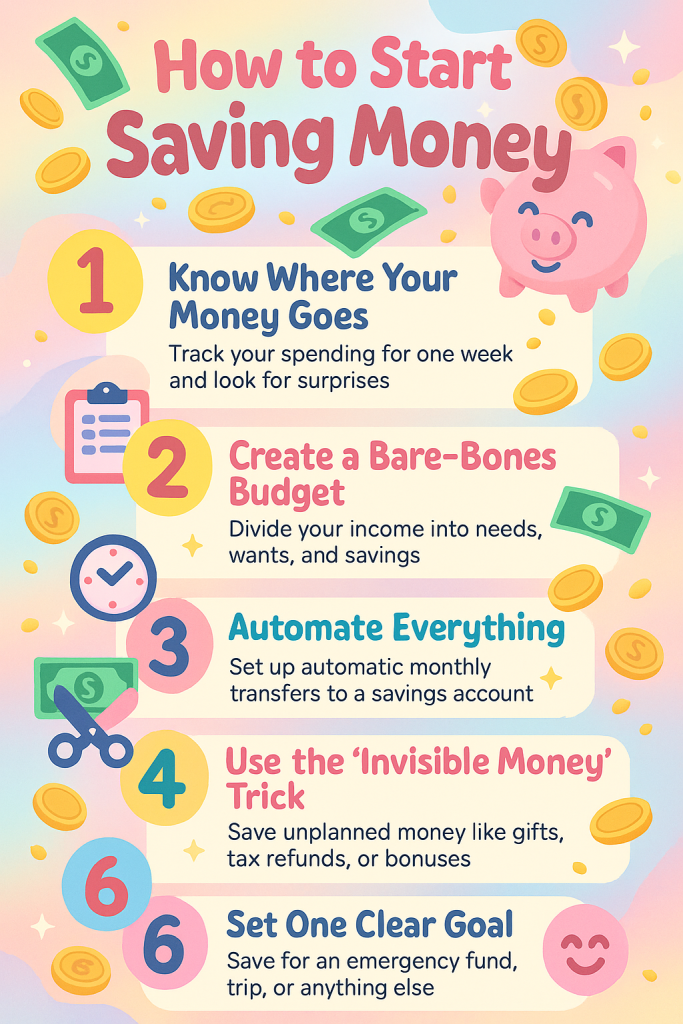Think you can’t save money because you’re barely making ends meet? You’re not alone – but you’re also not out of options. Whether you’re drowning in bills or just unsure where to start, this guide is for you.
Spoiler: You don’t need a big income to start building savings. You just need the right mindset, a few smart habits, and a plan you can actually stick to.
Why Saving Money Feels So Hard
Let’s be real. Life is expensive. Between rent, food, student loans, and everything in between, it can feel like there’s nothing left over. But here’s the truth:
- Most people don’t save because they wait until the end of the month.
- If you wait to save “what’s left,” there’s usually nothing left.
The fix? Pay yourself first – even if it’s just $5.
Step 1: Know Where Your Money Goes
You can’t save what you can’t see.
- Track your spending for 7 days.
- Use a simple app like Mint or just write it down in a notebook.
- Look for surprises – $6 coffees, food delivery, unused subscriptions.
This isn’t about guilt. It’s about clarity.
Step 2: Create a Bare-Bones Budget
Don’t overthink it. Just divide your income into three buckets:
- Needs – rent, groceries, transportation
- Wants – eating out, subscriptions, shopping
- Savings – this is non-negotiable
Start with a 50-30-20 split if you can. But if you can’t? Start with 1%. Even saving $10 a week builds the habit.
Step 3: Automate Everything
Make saving a no-brainer.
- Set up automatic transfers the day you get paid.
- Even $25 into a separate savings account builds momentum.
- Treat it like a bill you have to pay.
Pro tip: Use a savings account you don’t see every day. Out of sight = out of mind.
Step 4: Use the “Invisible Money” Trick
Every time you:
- Get a refund
- Receive birthday money
- Score overtime pay
Put it straight into savings. That money wasn’t part of your regular budget, so you won’t miss it.
Step 5: Cut Costs Without Feeling It
Small changes, big results:
- Cook 2 more meals a week at home
- Pause unused subscriptions for 30 days
- Call your phone or internet provider and ask for a better rate
Saving $50 a month is $600 a year. That’s real money.
Step 6: Set One Clear Goal
Saving just to “save” gets boring fast. Instead:
- Save for a $1,000 emergency fund
- Save for a trip, car, or debt payoff
- Give your savings a name
When you attach meaning to your money, you’re more likely to protect it.
Step 7: Make It Fun
Saving doesn’t have to feel like punishment.
- Try a no-spend challenge
- Use a money-saving app that rounds up your purchases
- Create a progress tracker and celebrate small wins
Saving is a skill – and like any skill, it gets easier with practice.
Final Thoughts
You don’t need to be rich to start saving – you just need to start. The goal isn’t perfection. It’s progress. Every dollar you save is a step closer to freedom, options, and peace of mind.
No matter how small your steps, they add up. And one day soon, you’ll look back and realize you’re not just surviving – you’re thriving.




